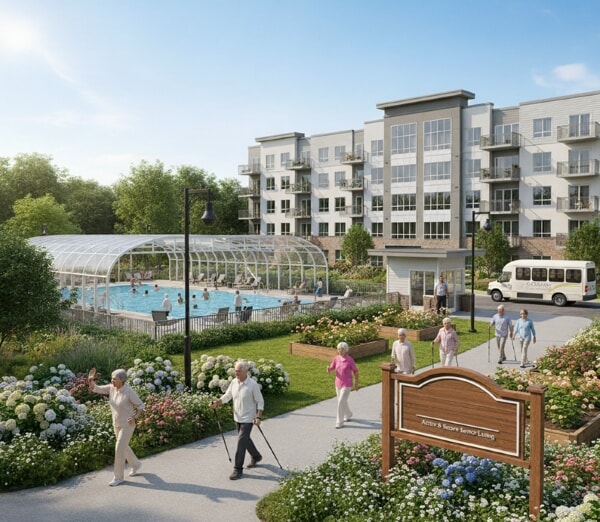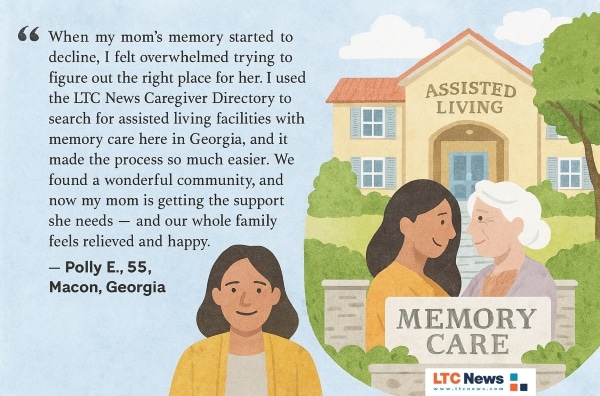Active and Safe Senior Living Communities Improve Quality of Life

When you think about the well-being of an older parent or even your own future, it’s natural to focus on more than just healthcare. Quality of life is essential, and the safety, social connection, and purpose matter just as much as the care and medical treatment.
Older adults living in these communities often experience better health outcomes, fewer hospital visits, and greater independence compared with those aging alone at home. With wellness programs, social opportunities, and secure environments, these facilities offer more than shelter — they provide a path to living better, not just longer.
Yes, needing help with daily living activities is often the main reason a loved one moves into a long-term care facility. But that doesn’t mean their quality of life has to end. On the contrary, today’s caregivers and long-term care communities strive to create environments where residents can continue to enjoy meaningful activities, social connections, and a sense of purpose — all while having their care needs met.
The Role of Activity in Quality of Life
Staying active is one of the biggest predictors of quality of life for older adults. According to the Centers for Disease Control and Prevention (CDC), seniors who engage in regular physical activity are more likely to remain independent and less likely to develop serious health conditions.
How activity boosts well-being:
- Independence: Regular exercise supports balance and mobility, thereby reducing the risk of falls.
- Heart and brain health: Engaging in light cardio or yoga can reduce the risk of cardiovascular disease by 22 percent, the risk of heart attacks by up to 45 percent, and improve circulation. It can even reduce the risk of dementia.
- Strength: Resistance training slows muscle loss, which typically accelerates after the age of 60. By age 60, many adults have lost between 30 and 40 percent of muscle strength. This condition is known as sarcopenia, a form of age-related muscle loss that increases the risk of frailty, falls, and even cognitive decline. Strength training can help retain muscle mass and prevent health issues like muscle loss and a higher risk of dementia.
- Mental health: Activity helps manage stress, anxiety, and depression.
- Connection: Group classes and clubs prevent loneliness and build friendships.
Even gentle exercise preserves independence and quality of life for older adults.
If they want to remain as functional and independent as possible, exercise is typically an important part of how they can do that.— Dr. Angela Catic, associate professor of medicine, geriatrics and palliative medicine, Baylor College of Medicine.
How Communities Promote Active Lifestyles
Senior living communities are designed to make activity easy and enjoyable, even for those with mobility challenges. Facilities now integrate wellness and engagement programs that support the whole person.
- Wellness programs: Guided fitness classes, yoga, resistance training, and stress-relief therapies.
- Social clubs: Book discussions, arts workshops, cooking classes, and trips to cultural venues.
- Gardening opportunities: Safe, accessible gardens that give residents purpose and movement.
- Outdoor spaces: Walking paths, shaded patios, and therapeutic gardens to enjoy fresh air.
- Skill-building activities: Dance, music, puzzles, or new hobbies that keep minds sharp.
Studies reveal that only 31% of seniors in the U.S. achieve the recommended 150 minutes of weekly aerobic activity. With mindful wellness programs, a senior care facility can raise this percentage and make residents feel stronger and more confident. These programs include:
These opportunities help seniors feel engaged, valued, and connected, improving their daily satisfaction.
Don't Forget Outdoor Spaces
Humans are a part of nature, and staying connected with the outdoors can significantly enhance health outcomes, especially for seniors. Approximately 50% of American adults are vitamin D deficient, and just 10-20 minutes of exposure to sunlight can significantly increase these levels. Memory care communities can add:
- Accessible Walking Trails including Wheelchair Paths
- Communal Garden Areas
- Shaded Patios for Gathering and Games
- Active Recreation Areas
- Serene Therapeutic Gardens, ETC
These natural settings are a great way to enhance physical activity and lower stress hormones.
Safety as a Foundation for Comfort
Quality of life is impossible without safety. Families should expect senior living facilities to provide:
- Fall prevention: Non-slip floors, grab bars, and proper lighting.
- Security systems: Controlled entries, emergency call systems, and surveillance.
- Emergency preparedness: Staff trained for natural disasters, medical events, and power outages.
- Accessibility: Wheelchair ramps, wide doors, and barrier-free walkways to support independence.
Safety is the baseline. From there, the quality of life grows.
Finding the Right Senior Living Facility
Choosing a facility isn’t just about location or cost — it’s about finding the right match for your loved one’s health, preferences, and personality. The best communities align with the resident’s needs for safety, activity, and engagement.
Steps to finding a quality community:
- Assess care needs: Determine whether your loved one requires independent living, assisted living, or memory care services.
- Search the LTC News Caregiver Directory: You can search from over 80,000 caregivers and extended care facilities by zip code.
- Tour multiple facilities: Look for clean spaces, friendly staff, and engaged residents.
- Ask about programs: Ensure the community offers wellness and social activities that fit your loved one’s interests.
- Check safety protocols: Review fall prevention, security, and emergency plans.
- Review staffing: High turnover can be a red flag. Ask about training and staff-to-resident ratios.
- Compare costs: Use the LTC News Cost of Care Calculator to see what you can expect in your area.
Using the LTC News Caregiver Directory will make the process of finding quality extended care much easier. Sometimes, families will review a facility they drive by without considering more alternatives.
Regardless of where you live, you can find a long-term care facility that meets your loved one's needs and provides a high quality of life. For example, in Oregon, you will find many options, including Quail Crest Memory Care in Eugene, Oregon.

Use the directory to review Quail Crest Memory Care and other options available in your area, where you and your loved one reside.
Don’t Overlook Long-Term Care Insurance
When exploring senior living communities for your loved one, one often overlooked step is confirming whether they already have a Long-Term Care Insurance policy. Many older adults purchased long-term care coverage years ago, often in their 50s, but never told their adult children about it. Families sometimes discover these policies only after paying for care from income and assets. While this money can usually be recovered, it is easier to start the process with the benefit of the policy.
If your parent or spouse has an LTC policy, it can make a dramatic difference in the type of care they receive. Benefits often cover assisted living, memory care, home health, or skilled nursing — providing flexibility and easing financial stress. A policy can also mean access to higher-quality facilities or additional support services that might otherwise feel out of reach.
It’s worth asking gently but directly. Review any old insurance files, bank drafts, or premium notices. If you find a policy, LTC News can help you with the claim at no cost or obligation.
LTC News partners with Amada Senior Care to provide free claim support with no cost or obligation — File a Long-Term Care Insurance Claim.
It is also a good time to review your long-term care plan and get quotes on LTC Insurance for you before you retire.
A Better Life, Not Just Longer Life
Aging should not mean giving up independence, joy, or safety. Active and safe senior living communities help older adults live with dignity, purpose, and connection.
If you’re making decisions for yourself or a loved one, look for a community where health, safety, and happiness intersect. Remember, quality of life in the later years is about more than care, it is about living fully every day.


